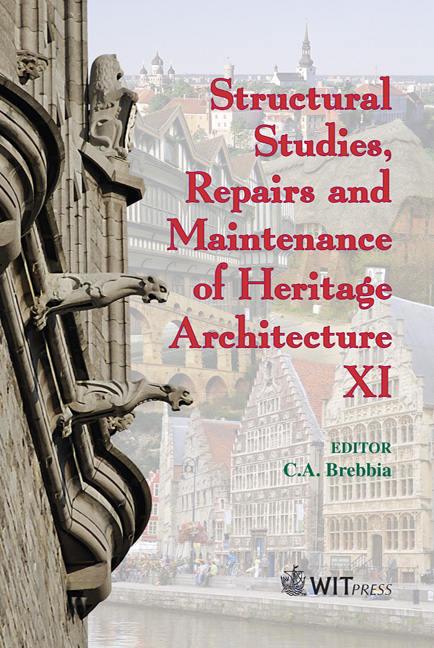Structural Consolidation Of The Apostle Santiago's Church In Jerez De La Frontera (Cádiz, Spain)
Price
Free (open access)
Transaction
Volume
109
Pages
10
Page Range
605 - 614
Published
2009
Size
4,186 kb
Paper DOI
10.2495/STR090531
Copyright
WIT Press
Author(s)
E. Rodríguez-Mayorga, E. Yanes & A. Sáez
Abstract
The Church of Santiago, in Jerez de la Frontera (Cádiz, Spain), is a three-nave temple with a basilican plan built in the 15th century. The dimensions of the current plan are approximately 43×25 m2 with a height of 20 m at the central nave. The church has undergone several modifications through history, either to enlarge its plan or to restore it, so that different styles are present, gothic being the most significant one. All the changes introduced to the original project have given rise to an irregular geometry. This fact plus a deteriorated material due mainly to rising damp, has caused severe structural problems. These structural problems have led to the closure of the church in 2005. The aims of this paper are the repair and strengthening of the structure of the temple. To achieve it, two facts are proposed: mineralization of the stone to avoid the effect of rising damp, and restoration of the original stiffness of the stone by consolidating them. Keywords: historical masonry building, FE modelling, consolidation, grout injection, NDT.
Keywords
historical masonry building, FE modelling, consolidation, grout injection, NDT




